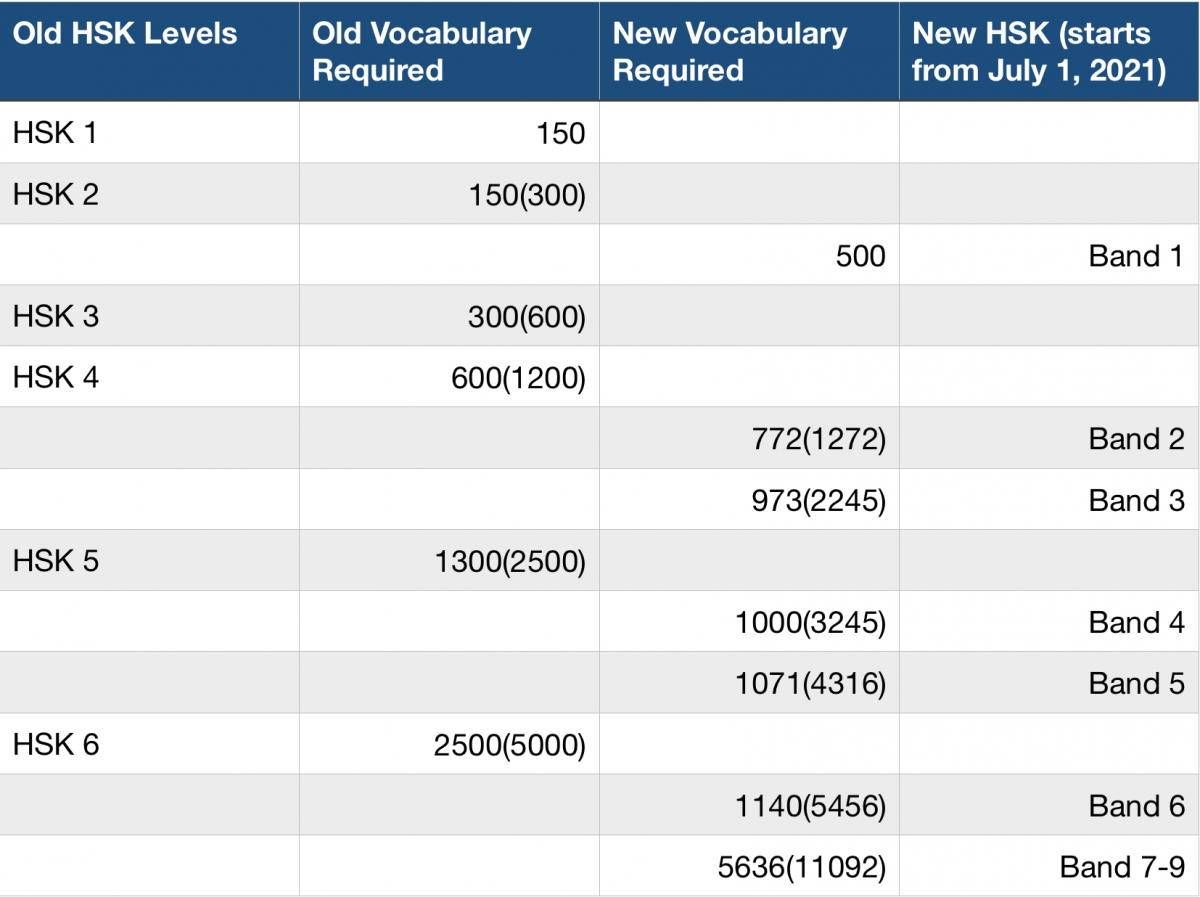China's HSK Language Test To be Overhauled for the First Time in 11 Years
Mandarin Monday is a weekly column where we help you improve your Chinese by detailing learning tips, fun and practical phrases, and trends.
As the Chinese idiom goes, 百尺竿头, 更进一步 bǎi chǐ gān tóu, gèng jìnyībù, literally, "At the top of a 100-foot pole, take one extra step." Put another way, even after reaching great heights of success, one should continue striving to improve oneself. That saying apparently hasn't been lost on the people behind the HSK (汉语水平考试 hànyǔ shuǐpíng kǎoshì), the preeminent Chinese language test. About a year ago we reported that some fundamental changes were imminent, and now, as of Jul 1, they will take effect.

The announcement, released via the official HSK Twitter account on May 21, states: "HSK is about to be reformed. In 2020, the Chinese Proficiency Standards will usher in a new change: A hybrid paradigm of 'Three Stages and Nine Levels' characterized by integration and all-in-one." That's compared to the current six-tiered system where level one is the easiest and six is "native level." Now, that highest classification with be further divided into three distinct levels to fulfill the need of advanced learners to acquire native-level proficiency certifications.
Additionally, the nine levels will be sub-divided into three larger stages that mark the test-taker's current progress, which is apparently inspired by the most popular European language test, the Common European Framework of Reference for Languages (CEFR).
From levels 1 to 6, each has a corresponding threshold for the number of syllables, characters, words, and grammatical structures the test taker should be able to comprehend and use (as measured via listening, speaking, reading, writing, and translation ability). These standards are considered the "four dimensions" of the new evaluation system and have been distinguished to "better present the uniqueness of the Chinese learning process." Meanwhile, for levels 7 to 9, there is no quantified evaluation quota for each level, however, test-takers will be expected to know over 11,000 words and 572 grammatical structures.

So far, that's all we know about the new levels. However, in a pdf published by International Chinese Education (世界汉语教学 shìjiè hànyǔ jiàoxué), they further outline the new proficiency standards for all levels. Compared to the current standards for HSK 1 to 6, it is not hard to see how the new system will alter the overall learning curve. For example, the current HSK 6 requires takers to master a cumulative 5,000 words, half of which are new, and 2,663 characters, 978 of which are new. In HSK 3.0, however, students need to memorize 5,456 words in total, 1,140 of which haven’t previously appeared, while the number of characters needed has been reduced to 1,800, 1,500 of which should already be familiar. That's good, right? Not so fast.

All those words have to go somewhere, in this case, they've been divided among the lower levels: the threshold to pass HSK levels 1 to 4 have now all increased, with the word list for each expanding drastically, by a multiple of three or four. Let's take HSK 1 for example. Whereas 150 words are currently sufficient for someone to pass, that number will rise to 500 words in HSK 3.0. The newest word list has been provided in the attachment under the announcement of the reformation of HSK on the website of the Ministry of Education of PRC. And it is not a simple readjustment within the current vocabulary, to better serve the needs of modern Chinese education in the international context, a considerable amount of new words are added to the list. Taking the most basic Band 1 as an example, about 20 percent of the words a learner needs to master have never appeared in previous HSK vocabularies. And of course, some outdated words have been removed to leave more space for the ever-changing nature of linguistic studies.
Besides the regular reading, writing, speaking, and listening tests, the new HSK 3.0 will also examine Chinese character writing. Unlike the traditional writing test which requires composing short essays, this additional test focuses on handwriting abilities, with students writing a certain amount of characters and copying the provided characters within a short amount of time. From Band 4, translation skills for both speaking and writing Chinese will be considered as well.
There has been no word on what these changes will mean for graduation requirements for international students in China. Until now, foreign students who take courses conducted in Chinese are required to pass the HSK 6 test prior to graduation, while an HSK 4-5 certificate is usually sufficient for students taught in foreign languages to pursue graduate or higher-level degrees. If you major in medicine or a related field, an additional Medical Chinese Test (MCT) may be required.
While the changes seem intimidating at first, we're all for the levels being rebalanced to better reflect an individual's proficiency. For too long, levels 1-3 have felt little more than token certificates, too easy to pass with minimal effort and making the jump to HSK 4 and up too substantial. Finally, adjusting the test to better reflect the CEFR system should help give the HSK improved weight and caliber on the international stage.
READ: Mandarin Monday: The Best News Apps to Help You Learn Chinese
Images: Project Pengyou, Hanban, HSK Official, Shijiehanyujiaoxue







